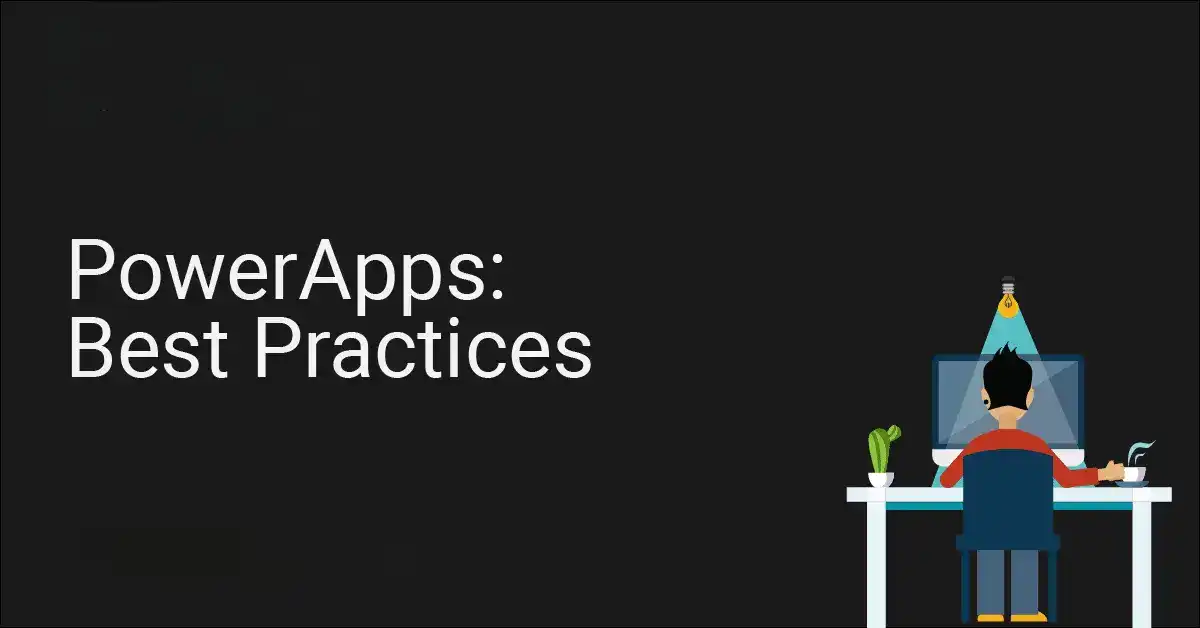“As per a survey report by BuiltWith, there are about 3,283 live websites that use MS Power Apps currently, and about 1,292 websites used this platform in the past!”
Microsoft Power Apps, an important tool of the Power Automate suite, has emerged as a game-changer in the ever-evolving landscape of low-code and no-code app development. This platform empowers diverse businesses to create tailored applications with ease, in a short time, and without the need for extensive coding. However, the ease of building apps using Power Apps should not overshadow the significance of adhering to the best practices required for building them. In this blog, we'll dive deep into the tips, tricks, and best practices to ensure that the apps developed using Microsoft Power Apps are highly functional, scalable, and user-friendly. It covers Let’s commence.
Power Apps Development Best Practices: Tips and Tricks to Follow
-
Planning Well Before Beginning with the Project
Before diving into the Microsoft Power Apps canvas or model-driven design, take the time to plan your application thoroughly. Consider its purpose, functionality, technologies to use, target audience, etc. Start by outlining your app's objectives and creating a clear project scope. This planning phase helps you avoid common pitfalls, such as feature creep and inconsistent user experiences.
-
Using Existing Tools and Reusable Components
Microsoft Power Apps allows you to create and reuse components, saving time and ensuring consistency across your applications. Instead of creating everything from scratch, use Microsoft's templates. Develop a library of custom controls, screens, and templates that can be easily imported into new apps. This not only accelerates development but also maintains a cohesive look and feel across your Apps.
-
Maintaining Coding Standards is Important
It is essential to follow coding standards religiously and have a clean code. Ensure that the code you write is easy to understand by others as well. A uniform code improves its readability and reduces the complexity.
-
Optimization of Data Sources
Efficient data management is crucial for building scalable apps. Ensure that your data sources are well-structured and optimized regularly. Leverage SharePoint lists, SQL databases, or other data connectors as and when required. Limit the use of large datasets and filter data at the source whenever possible to reduce data transfer and improve the performance of the app.
-
Other Important Technical Tips and Tricks
- Enable the Loading Spinner in Galleries: This technique assists Power Apps in diagnosing startup problems and provides users with visual feedback when encountering extended loading periods.
- Transform Frequently Used Elements into Components: This minimizes redundancy by reusing components across various screens or Canvas apps.
- Give Priority to Delegable Calls instead of Non-Delegable Ones: Ensure efficient data retrieval and a quicker start of the app, especially when handling substantial data source datasets, including in-app databases.
- Inserting the Images as HTML Text When Exceeding the limit of 20 Images: This approach reduces the loading time for Power Apps and expedites access to compiled app assets.
- Make use of Themes for Consistency: Simplify the task of maintaining uniformity across all Canvas app pages by applying themes.
- Opt for Concurrent Functions instead of Non-Sequential Formula Execution: This approach enables multiple operations to run concurrently, thus reducing the demand on processing power.
- Utilize Data Collections for Storage: Using data collections to preload app resources expedites the startup process.
- Employ If-Error for Exception Handling: If you employ If-Error for exception handling, errors that occur when the app requests data from a server or carries out other tasks, are handled quite gracefully.
- Opt for Combo Boxes Instead of Dropdowns: A combo box provides more flexibility than a dropdown menu since it allows users to input text besides selecting the options provided.
- Leverage Variables or Collections to Share Data Across Multiple Screens: Effectively track user interactions throughout their session within your app.
-
Security Measures must be Prioritized
Security is paramount for any new-age application. Use built-in authentication and authorization mechanisms in Microsoft Power Apps to control user access and permissions. Regularly review and update security settings to stay ahead of potential threats.
-
Documentation is Essential
Document your application properly and thoroughly, including its purpose, data sources, and any custom functions or formulas. This documentation is extremely important for the purposes of troubleshooting and knowledge transfer.
-
Rigorous Testing and Feedback
Before deploying your application, conduct thorough testing with a diverse group of users. Perform unit tests, integration tests, performance tests, etc. Gather feedback and make iterative improvements based on their input. Engaging with end-users during the development process helps ensure your app aligns with their needs and expectations.
-
Regular Maintenance and Updates
Even after deployment, continuously monitor your apps and check for issues, performance degradation, and security vulnerabilities. Implement regular updates and improvements based on user feedback and changing business requirements.
Concluding lines
Building high-quality low-code applications using Microsoft Power Apps is not just about the initial development process but an ongoing commitment to quality and excellence. By following these best practices, you'll be able to successfully create apps that not only meet your immediate business requirements but also evolve with your organization's growth and changing user expectations.
I hope this blog will prove beneficial and help you build a high-quality end product. We, ITCube Solutions, are a prominent software services provider and have extensive expertise in MS Power Automate tools. We have been serving global clients across domains since 2003 and have successfully delivered hundreds of large and medium-sized projects.
For further tips or queries regarding the Power Apps platform or any other Power Automate solutions, contact us at: inquiry@itcube.net.

